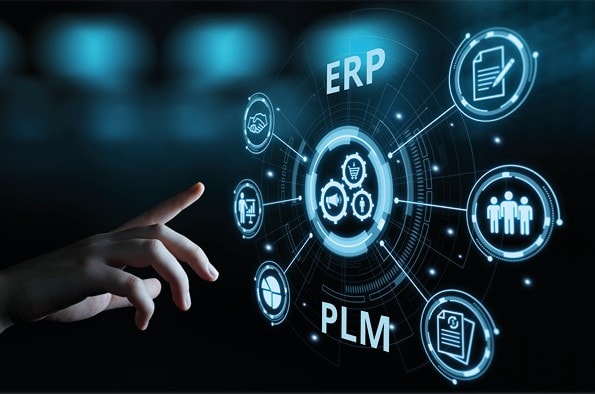
|
A powerful ERP Solution requires a sustainable PLM InfrastructureBy Martin Strietzel In recent years, many companies have invested a great deal of time and effort in modernizing their ERP landscape. This means that they now have an opportunity to provide their product development departments with a state-of-the-art PLM infrastructure and thus prepare their company for addressing topics such as AI-based product development and digital traceability. PROSTEP provides them with support when designing their PLM infrastructure. In the past, many companies made use of a product data management (PDM) system with a limited range of functions that was tightly integrated in their ERP solution. Migration to SAP S/4HANA, however, means that they are now faced with the question of whether their existing PDM system is still able to meet the growing demands of digital product development, or whether they should add a correspondingly powerful PLM infrastructure to their state-of-the-art High-Performance Analytics Appliance, or HANA for short. The answer is a resounding yes! But how should companies best approach this topic to avoid immediately ending up in the sales department of the various PLM providers? PROSTEP believes that companies first need to develop a clear PLM strategy. This strategy creates the framework for all future PLM-related decisions in the form of a PLM architecture. It thus provides a framework for important investment decisions and sustainable motivation for key stakeholders. The introduction of SAP S/4HANA represents a technological quantum leap for companies. Among other things, the new SAP solution features a state-of-the-art, in-memory database with simplified data structures, which makes it possible to process and analyze data in real time. The platform, which can be used in the cloud, on-premises or in a hybrid infrastructure, uses artificial intelligence (AI), machine learning and predictive analytics to automate processes and provide users with support when making decisions. Similar functions are today also needed in the PLM environment to enable competitive products to be brought to market faster. 
In this era of AI transformation, a powerful PLM architecture is at least equally as important to a company's success as a state-of-the-art ERP platform. The development of smart products, which incorporate a high proportion of electronics and software, places greater demands on this architecture. It must achieve a balance between mechanical, electrical/electronic (E/E) and software development, it must orchestrate development process and, most importantly, change processes across different domains, and it must ensure the traceability of the results in both directions. At the same time, it provides the basis for AI-based work in product development and for the use of model-based development methods, which make it possible to describe an overall system in functional terms. You can't stand on just one leg ERP and PLM infrastructures are a company's most important mainstays, and they are crucial to its success. If one of them weakens, the whole company starts to limp. It is, however, also important that both mainstays complement each other well and that interaction between the two is optimized. There are now many more points of contact than in the past, when it was all about exchanging a small amount of item master data between the two system environments. Companies must learn to see them as part of the overall infrastructure, which may also require that certain functions be moved. 
Some companies, for example, are thinking about maintaining not only the engineering BOM but also the manufacturing and service BOMs in the PLM system with the aim of ensuring that the data remains consistent and up-to-date across all departments and domains. This is particularly interesting in the context of software updates during live operation because the software developers need to know the configuration of the delivered product, whose BOM is usually maintained in the ERP system. But there are also other processes and functions, like change management for example, that have to work correctly across all systems. All of this should be taken into consideration when defining the PLM architecture – long before the system or systems are selected. PLM infrastructure is more than merely one system Even at smaller companies, the PLM infrastructure usually comprises more than just a single system. It becomes a PLM architecture when focus is not placed on the systems but on the processes, and the infrastructure is described in this context. Therefore the first step involves defining the PLM capabilities required for the future and localizing them in the existing system environment. This makes it possible to identify and prioritize the need for action. For example, companies have to decide how they want to organize requirements management, how they want to maintain their variants and how they want to integrate application lifecycle management (ALM). A whole cosmos of PLM capabilities that extends far beyond the conventional PDM functional scope. PROSTEP's capability-based consulting approach is a great help when it comes to developing a PLM architecture and defining a corresponding roadmap. Our experienced consultants provide you with support for the digital transformation of your development processes and the development of a digital thread that enables end-to-end information flows across system and domain boundaries. To do this, they analyze your existing system landscape, identify the need for action and provide you with a roadmap for modernizing your PLM architecture. We look forward to hearing from you. |
|
| © PROSTEP AG | ALL RIGHTS RESERVED | IMPRINT | PRIVACY STATEMENT | YOU CAN UNSUBSCRIBE TO THE NEWSLETTER HERE. |

